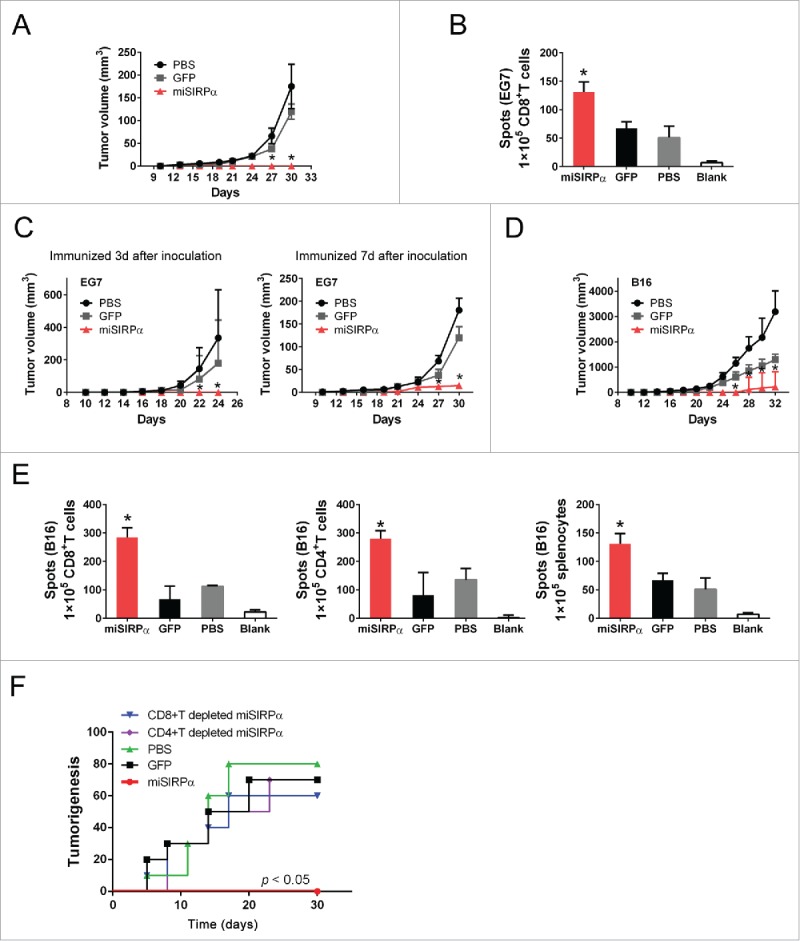Figure 6.

SIRPα silencing in DCs enhances antitumor immune effects. (A & B) Antitumor immunosurveillance activity against EG7. Syngeneic C57BL/6 mice were vaccinated with 2 × 106 LV-miSIRPα–DCs or controls pulsed with OVA peptide 7 d before challenge with 1 × 106 OVA positive EG7 cells. Tumor sizes were measured (A) and CD8+ responses to OVA were assessed by IFNγ ELISPOT assay (B). Tumor growth curves (n = 6 mice per group) represent one of two repeated experiments. p < 0.01, LV-miSIRPα-DCs compared with GFP-DCs. (C & D). Antitumor activity against pre-established or established tumors. C57BL/6 mice were inoculated subcutaneously with 1 × 106 EG7-OVA or 1× 105 B16 tumor cells and 3 d or 7 d later were immunized with 2 × 106 OVA or TRP2-pulsed LV-miSIRPα-DCs or control DCs ex vivo matured with LPS twice at a weekly interval, followed by in vivo polyI:C stimulation i.p. after each DC immunization. Tumor growth curves (n = 6 mice per group) represent one of two repeated experiments. *p < 0.01, LV-miSIRPα-DCs compared with GFP-DCs. (E) IFNγ ELISPOT assays of CD8+ T cell, CD4+ T cell or splenocytes responses to TRP-2 were recorded. *p < 0.01 vs. GFP controls. (F) Characterization of the antitumor immune response induced by LV-miSIRPα-DCs. 1 × 107 pooled splenocytes or 1 × 107 CD8+ or CD4+ T cells isolated from the pooled splenocytes (two or three per group) of different groups of mice were transferred to host mice 1 d before B16 melanoma cell inoculation. Tumorigenesis was monitored for 30 d. Shown are the pooled results of two independent experiments (n = 10).
